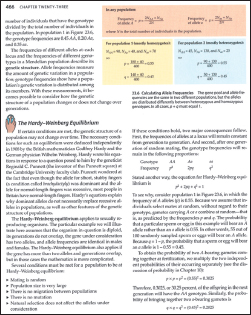| TABLE 11.3 Additional Design Features for Technical Communication | ||
| Two types of rules are used here: vertical rules to separate the columns and horizontal rules to separate the items. Rules enable you to fit a lot of information on a page, but when overused they make the page look cluttered. |

Source: From Institute of Scientific and Technical Communicators, “Industry News” in COMMUNICATOR (Spring 2005). Reprinted by permission of the Institute of Scientific and Technical Communicators.
|
Rules. Rule is a design term for a straight line. You can add rules to your document using the drawing tools in a word processor. Horizontal rules can separate headers and footers from the body of the page or divide two sections of text. Vertical rules can separate columns on a multicolumn page or identify revised text in a manual. Rules exploit the principles of alignment and proximity. |

Source: From J. W. Valley, “A cool early Earth?” from SCIENTIFIC AMERICAN (October 2005): 58–65. Copyright © 2005 by Scientific American, Inc. Illustrations reprinted by permission of Lucy Reading-Ikkanda. Images used by permission of J. W. Valley.
|
Boxes. Adding rules on all four sides of an item creates a box. Boxes can enclose graphics or special sections of text or can form a border for the whole page. Boxed text is often positioned to extend into the margin, giving it further emphasis. Boxes exploit the principles of contrast and repetition. | |
| The different-colored screens clearly distinguish the three sets of equations. |

Source: Excerpt from W. K. Purves, D. Sadava, G. H. Orians, and H. C. Heller, LIFE: THE SCIENCE OF BIOLOGY, Seventh Edition, page 466. Copyright © 2004. Reprinted by permission of Sinauer Associates, Inc.
|
Screens. The background shading used behind text or graphics for emphasis is called a screen. The density of a screen can range from 1 percent to 100 percent; 5 to 10 percent is usually enough to provide emphasis without making the text illegible. You can use screens with or without boxes. Screens exploit the principles of contrast and repetition. |
| The marginal glosses present definitions of key words. |

Source: Excerpt and sample marginal glosses from PSYCHOLOGY, Tenth Edition (New York: Worth Publishers, 2013). David C. Myers, page 304.
|
Marginal glosses. A marginal gloss is a brief comment on the main discussion. Marginal glosses are usually set in a different typeface—and sometimes in a different color—from the main discussion. Although marginal glosses can be helpful in providing a quick overview of the main discussion, they can also compete with the text for readers’ attention. Marginal glosses exploit the principles of contrast and repetition. |
| This pull quote extends into the margin, but a pull quote can go anywhere on the page, even spanning two or more columns or the whole page. |

Source: Excerpt and sample pull quote from THE AMERICAN PROMISE: A HISTORY OF THE UNITED STATES, VOLUME I: TO 1877 (Boston: Bedford/St. Martin’s, 2005). L. Roark, M. P. Johnson, P. C. Cohen, S. Stage, A. Lawson, and S. M. Hartman, p. 115.
|
Pull quotes. A pull quote is a brief quotation (usually just a sentence or two) that is pulled from the text, displayed in a larger type size and usually in a different typeface, and sometimes enclosed in a box. Newspapers and magazines use pull quotes to attract readers’ attention. Pull quotes are inappropriate for reports and similar documents because they look too informal. They are increasingly popular, however, in newsletters. Pull quotes exploit the principles of contrast and repetition. |